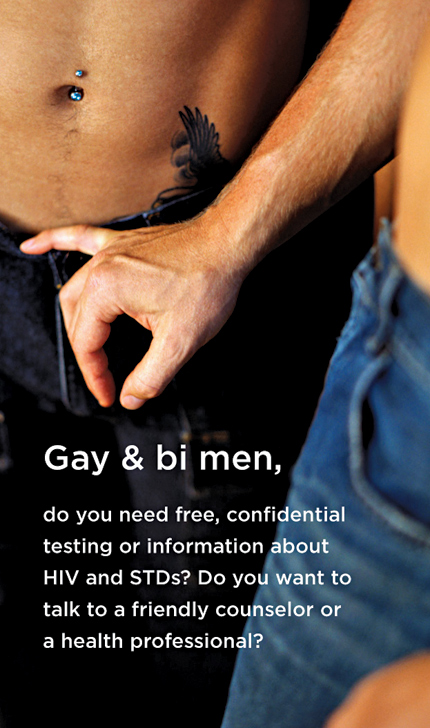
Startling Increase in the Rise of STIs in communities of color and overall and how PrEP is being used.
By: Mike Givens/TRT Assistant Editor—
In November, the Atlanta-based Centers for Disease Control and Prevention (CDC) released a report highlighting a significant increase in sexually transmitted infections, STIs, across the country.
The nearly 200-page report, Sexually Transmitted Disease Surveillance 2014, found that cases of syphilis, chlamydia, and gonorrhea had increased for the first time since 2006. The study reported cases of chlamydia increased by 2.8 percent between 2013 and 2014 while reports of both gonorrhea and syphilis increased by 5.1 percent and 15.1 percent, respectively, during the same timeframe.
Of especial concern in the study was the alarming increase in these infections in men who have sex with men (MSM).
“STDs affect people in all walks of life, particularly young women and men, but these data suggest an increasing burden among gay and bisexual men,” said Dr. Jonathan Mermin, who heads up the CDC’s National Center for HIV/AIDS, Viral Hepatitis, STD, and Tuberculosis Prevention, in a press statement announcing the new report.
The CDC also reported that new diagnoses for HIV/AIDS have declined, but noted that racial disparities do exist. At the 2015 National HIV Prevention Conference in December, Eugene McCray, director of the CDC’s Division of HIV/AIDS Prevention noted that diagnoses among Black and Latino men were up 24% since 2005 (goo.gl/WDqcqS).
What Behaviors are Driving These Numbers?
Dr. Philip Chan, consultant medical director for the Rhode Island Department of Health, noted that one factor potentially contributing to the rise in diagnoses is that more MSM are being regularly tested. [pullquote]A lack of information on resources and safe-sex practices often causes adolescent males to believe they’re not at risk of contracting an STI or HIV/AIDS or they don’t know where, or are too embarrassed, to purchase condoms and lubricants, according to Cahill.[/pullquote]
“We have tried to encourage MSM to routinely test for HIV and other STIs which may have contributed to the increased number of cases we are seeing,” Chan said, emphasizing that increased testing amongst MSM will lead to increased STI diagnoses, particularly if men are having sex without a condom with multiple partners.
Sean Cahill, director of health policy research at The Fenway Institute in Massachusetts attributed the increase in STI diagnoses to a lack comprehensive sex education curricula in schools.
“In many school systems principals have a great deal of autonomy, so there is significant variation from school to school in terms of whether or not young people learn how to protect themselves against STDs,” Cahill said.
A lack of information on resources and safe-sex practices often causes adolescent males to believe they’re not at risk of contracting an STI or HIV/AIDS or they don’t know where, or are too embarrassed, to purchase condoms and lubricants, according to Cahill.
“We need to address sex education as well as acknowledge that many young people are sexually active and make it easier for them to access what they need to stay healthy,” he said. [pullquote]“…STI rates are also on the rise in the general community, not just the LGBT community, which tells us our overall prevention messages that once worked are failing across the board,”—Carl Sciortino, AAC.[/pullquote]
Carl Sciortino, executive director of AIDS Action Committee, stressed the need for proper messaging and education on STIs, but not just for gay and bisexual men.
“…STI rates are also on the rise in the general community, not just the LGBT community, which tells us our overall prevention messages that once worked are failing across the board,” he said.
According to Sciortino, lessening concerns around contracting HIV/AIDS have driven down community demand for education and activism on safe-sex practices.
Troubling Racial Disparities
Cahill said the jarring racial disparities affecting Black and Latino men with HIV/AIDS and STI diagnoses has its roots in social issues that have historically plagued communities of color. Those issues include inadequate access to health care; lower rates of health insurance; disproportionately high rates of undiagnosed STIs and HIV/AIDS; increased instances of unprotected sex; and lower adherence to HIV/AIDS treatment regimens.
Gary Daffin, executive director of the Multicultural AIDS Coalition, said these racial disparities are compounded given the insularity of many communities of color. [pullquote]Cahill said the jarring racial disparities affecting Black and Latino men with HIV/AIDS and STI diagnoses has its roots in social issues that have historically plagued communities of color. Those issues include inadequate access to health care; lower rates of health insurance; disproportionately high rates of undiagnosed STIs and HIV/AIDS; increased instances of unprotected sex; and lower adherence to HIV/AIDS treatment regimens. [/pullquote]
“…people tend to have sexual relationships with people from their own race,” he said. “Because the prevalence of HIV is greater among MSM of color, and the number of MSM of color is relatively small, the likelihood of exposure to HIV from someone in our sexual network is higher.”
Safe-Sex Practices Paramount to Prevention
“…many men that have STIs, as well as HIV, do not have any symptoms, so regular testing is really important,” said Thomas Bertrand, chief of the Center for HIV, STDs, Tuberculosis, and Viral Hepatitis of the Rhode Island Department of Health. “Also, while it can be awkward, it’s important for MSM to let partners know if they are diagnosed with an STI or HIV so that their partners can get tested.”
Fighting HIV/AIDS through the use of PrEP (Pre-Exposure Prophylaxis), also known as Truvada, has been pivotal in national and local preventative efforts. Though the drug has an incredibly high rate of success preventing the development of HIV/AIDS, it is not a means of protection against other STIs. [pullquote]“PrEP will reduce the risk of getting HIV for those who adhere to the daily regimen, and will also lead to an increase in their STI screenings as they come back for follow-up testing every few months,”—[/pullquote]
“Our STD crisis was bad before PrEP so we should keep this in perspective and not demonize PrEP but acknowledge that we have a sexual health problem in this country that predates PrEP and requires us to rethink how we prepare our youth to avoid STDs and HIV,” said Cahill, noting that of the 20 million STI diagnoses in this country, 10 million of them occur amongst 15 to 24 year-olds.
Cahill recommended regular condom and lubricant use during sex and for young people to explore other forms of sex outside of anal intercourse while also reducing their number of sexual partners.
“PrEP will reduce the risk of getting HIV for those who adhere to the daily regimen, and will also lead to an increase in their STI screenings as they come back for follow-up testing every few months,” said Sciortino of AIDS Action Committee.
Daffin of the Multicultural AIDS Coalition said that in the direct service work the organization does, staff and volunteers do their best to normalize sex through routine conversations with clients and that everyone should feel comfortable having conversations with their healthcare providers when discussing their sexual activities.
“If you aren’t comfortable talking to your doctor, fire her or him and find someone else,” he said.
The Gay and Lesbian Medical Association has a directory of LGBTQ-friendly and affirming doctors across the nation at www.glma.org.







